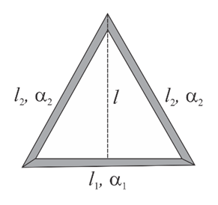Suppose you come across old scientific notes that describe a temperature scale called on which the boiling point of water is and the freezing point is .
To what temperature on the Fahrenheit scale would a temperature of correspond? Assume that the scale is linear; that is, the size of a degree is the same everywhere on the scale.

Important Questions on Thermometry, Thermal Expansion and Calorimetry
What will be the values of the following temperature on the Kelvin scale:
What will be the values of the following temperature on the Kelvin scale:
What will be the values of the following temperature on the Kelvin scale:
Two ideal gas thermometers and use oxygen and hydrogen, respectively. The following observations are made:
| Temperature | Pressure thermometer | Pressure thermometer |
| Triple point of water | ||
| Normal melting point of sulphur |
What is the absolute temperature of normal melting point of sulphur as read by thermometer and
Two ideal gas thermometers and use oxygen and hydrogen, respectively. The following observations are made:
| Temperature | Pressure thermometer | Pressure thermometer |
| Triple point of water | ||
| Normal melting point of sulphur |
What do you think is the reason for slightly different answers from and
A brass rod of length and diameter is joined to a steel rod of the same length and diameter. What is the change in length of the combined rod at , if the original lengths are at ? Is there a ‘thermal stress’ developed at the junction? The ends of the rod are free to expand (Co-efficient of linear expansion of brass is and steel is )
An isosceles triangle is formed with a thin rod of length and coefficient of linear expansion , as the base and two thin rods each of length and coefficient of linear expansion as the two sides. If the distance between the apex and the midpoint of the base remain unchanged as the temperature varies, show that .

